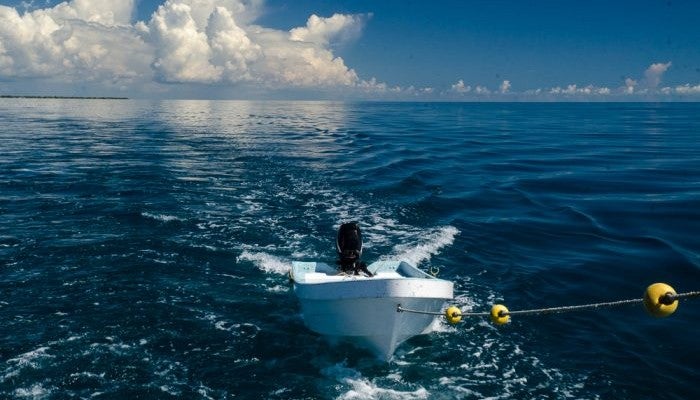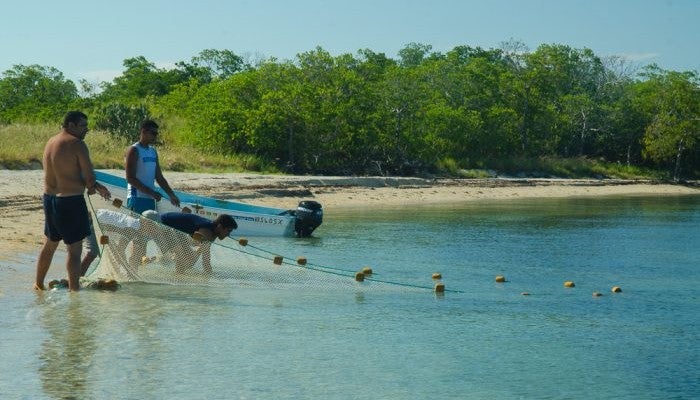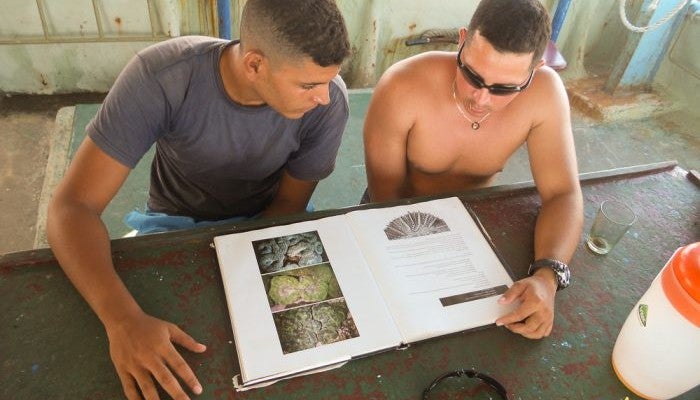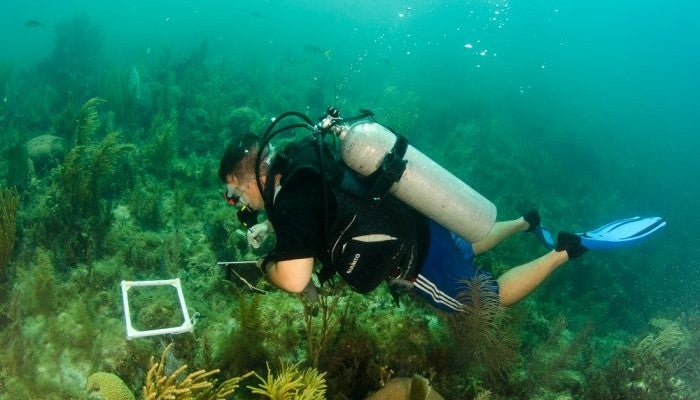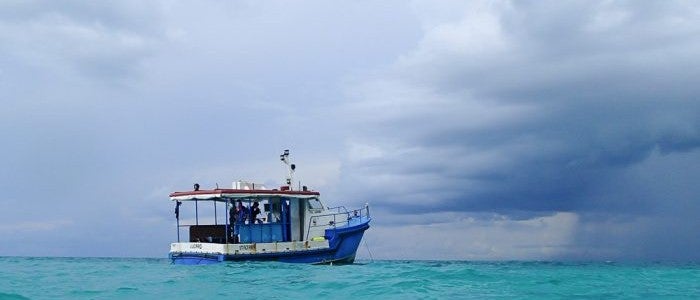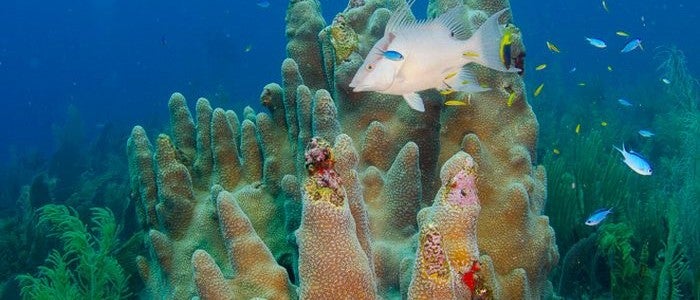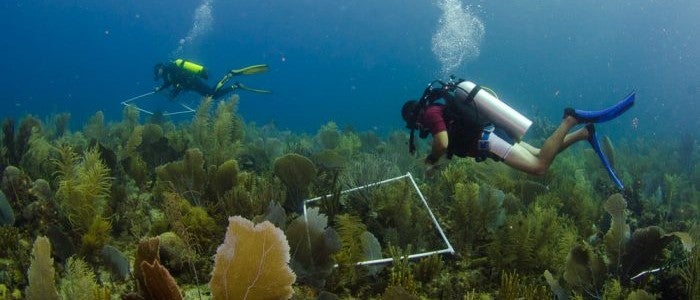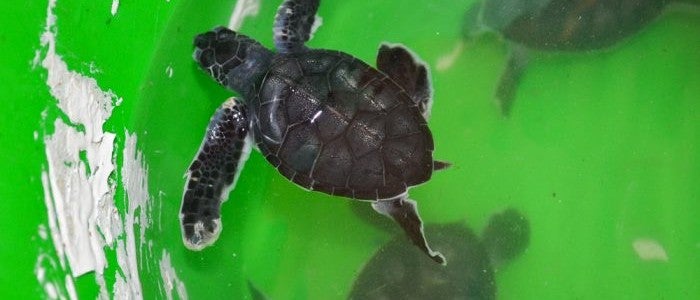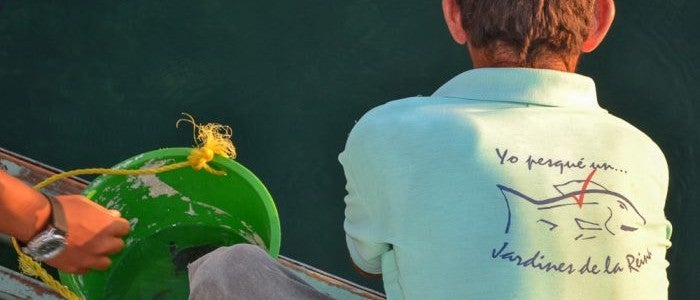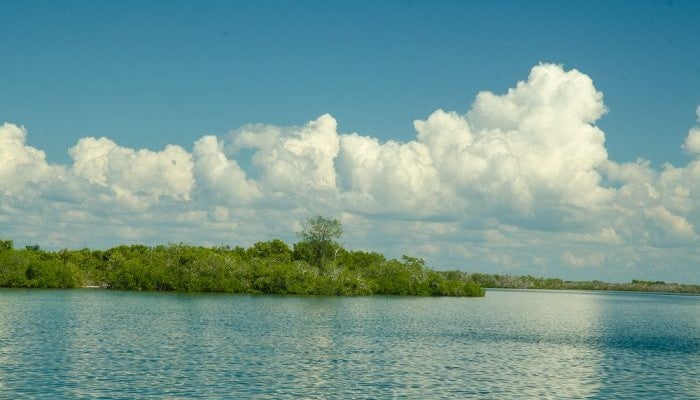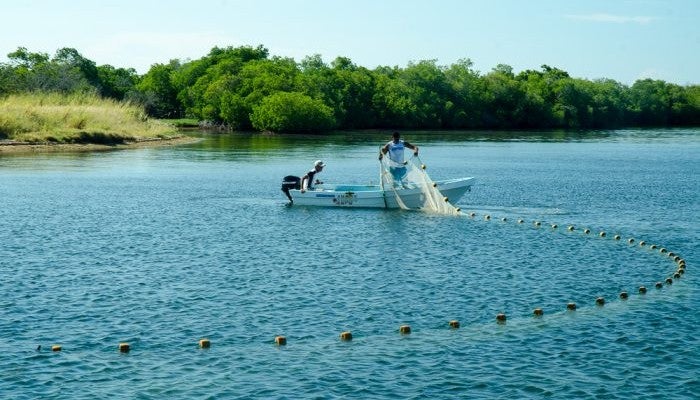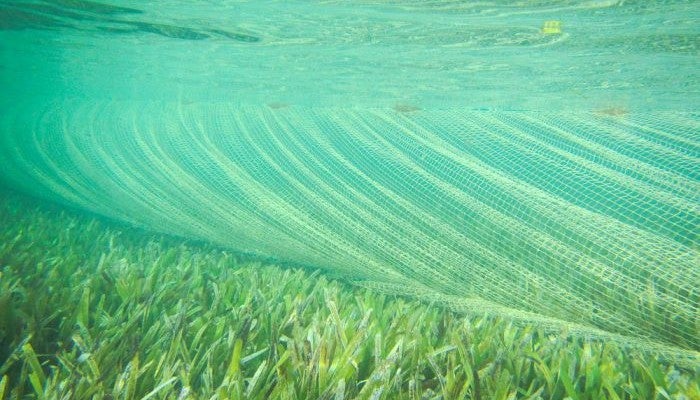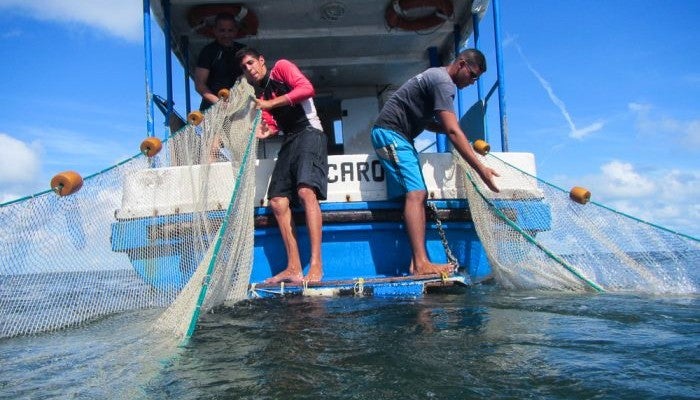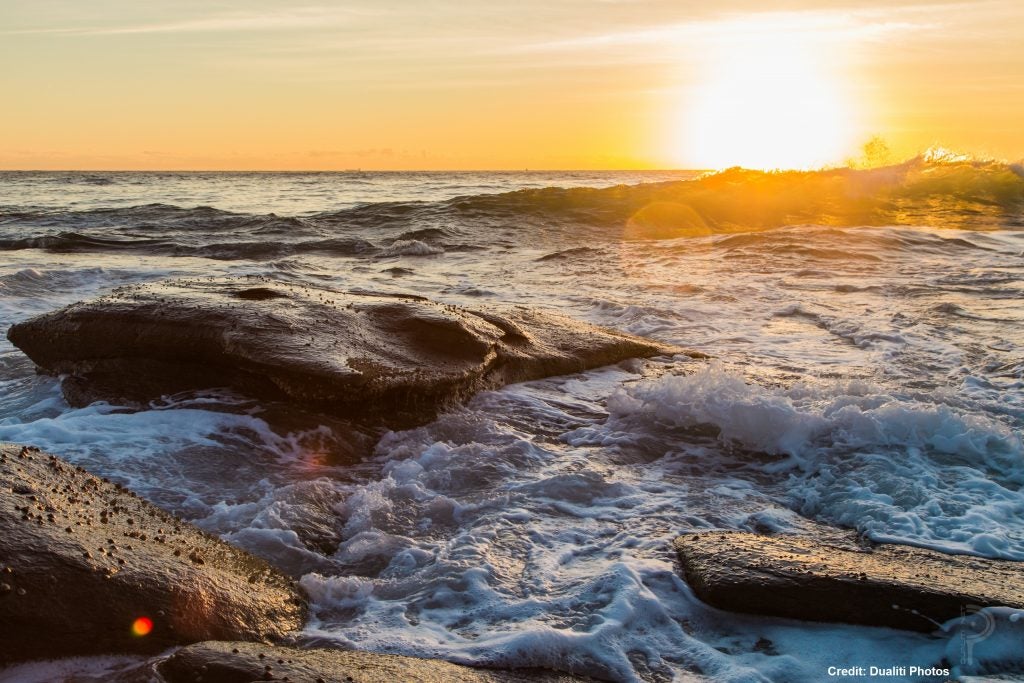 The global COVID-19 pandemic gives us all pause about what the future holds. Our focus and attention are on all those hurt by this terrible disease. But for many of us, this is also a time of deep reflection about society and the world we’ll inhabit when this scourge is over. So for me, it’s also a moment to reflect on the prospects for the ocean, one of the planet’s fundamental life-support systems — making it vital to human health and well-being. Read More
The global COVID-19 pandemic gives us all pause about what the future holds. Our focus and attention are on all those hurt by this terrible disease. But for many of us, this is also a time of deep reflection about society and the world we’ll inhabit when this scourge is over. So for me, it’s also a moment to reflect on the prospects for the ocean, one of the planet’s fundamental life-support systems — making it vital to human health and well-being. Read More
EDFish
Selected tag(s): Cuba
Hope for the oceans in a time of COVID-19
Cuba’s plan for shark conservation
Sharks are recognized by scientists, resource managers and the tourism ministry in Cuba for their critical role in marine ecosystems, as a tourist attraction for divers and as a protein source when caught by fishers. Leaders from various Cuban agencies, looking at how to balance these needs and protect sharks, are now for the first time creating a national plan for shark conservation. This is important not just for Cuba but for the entire Gulf of Mexico and Caribbean region where many shark populations travel throughout waters shared by many nations.
Earlier this year I sat in a hotel discoteca in Trinidad, Cuba that was converted into a teaching space for daytime use. Here I watched fishers jump at the chance to correctly identify shark species and prove their skills in front of their peers. This was the second shark and ray identification workshop organized by Cuba’s Ministry of Food (MINAL) and EDF where fishers, boat captains and port employees came together from across the country to learn about Cuba’s efforts to study and conserve sharks.
Because of ongoing concerns over declining shark populations in the region, the Cuban government is making shark conservation a national priority through the development of its first-ever National Plan of Action for the Conservation and Sustainable Management of Sharks and Rays (NPOA-Sharks). They hope to complete it by the end of the year. Read More
EDF Partner In Cuba Visits US for “Our Oceans” Conference (Part 2)

Dr. Fabián Pina Amargós is a first-rate marine scientist from Cuba, who has worked closely with EDF’s Oceans program for many years. Fabián has been a scientist with Cuba’s Center for Coastal Ecosystems Research for twenty years and was recently named director of the center.
Welcome back for Part 2 of our intern Shannon Switzer’s interview with Dr. Fabián Pina Amargós, as they discuss the marine scientist’s opinion on the effectiveness of MPA’s and ecotourism as conservation tools as well as his hopes for Cuba as a nation. Read the first part of the interview here.
SLS: Some people are skeptical that MPAs are effective in sustaining fisheries while protecting marine life. What have your studies shown you about the effectiveness of MPAs?
FPA: I think that of course, the controversial part is because nature is very variable. Sometimes you can have the results or the positive impacts of a management tool in a shorter time and sometimes it takes longer, which is dependent, for example, on the species you are trying to recover. So a species that has a short life cycle would have an impact of a no-take area faster, but if we are thinking tarpon, or goliath grouper or other species that live longer, you need to wait a longer time [to see the results].
But generally speaking, and especially where I am dealing in the Gardens, which is relevant for Cuba but also for other tropical places with similar ecosystems, we measured the results of the effect of the marine reserve. We found that after ten years of the declaration [of the MPA] the number of fish increased, the size of the fish are bigger and they are more abundant inside of the reserve. Also, they are not shy and are friendlier and allow you to get closer, so you can enjoy them more when you dive. But also, because the number has increased dramatically, we carried out an experiment and tested the spill-over effect, which is when the number of fish increases until it’s full inside, and they need to move outside. It’s not a random movement, it’s basically a density-dependent kind of movement, cause it’s crowded inside the protected area, and then they just spill over the boundaries.
Then the fishery grounds benefit from that, and you can fish outside. We’ve proved that [with our research], but now fishermen are saying most of the fish they are catching now are coming from the reserve. So now the reserves are gaining support by, not all of the fishermen, but many of them. At the beginning the vast majority of them were opposed to the reserve, and it’s a normal reaction of human behavior—you are preventing me from using a fishing ground that I’ve been using forever and my father and my grandfather and my grand grandfather were fishing on—but they realize now that this is a good tool. Read More
Establishing a biological and ecological baseline of Cuba’s coastal ecosystems
By: Kendra Karr & Owen Liu
A team of scientists from Cuba and EDF set sail on an expedition to assess the status and health of marine ecosystems of the Gulf of Ana Maria and the Gardens of the Queen marine reserve in southern Cuba, one of the most pristine and intact coral reef ecosystems in the Caribbean.
One morning we awoke to a small tuna boat pulling up alongside the RV Felipe Poey. The crew of the “Unidad ‘77” had been targeting bonito, a small tuna-like fish, south of the Gardens of the Queen marine reserve. EDF scientists were eager to tap into the captain’s localized knowledge, and peppered him with questions that were ably translated by CIM’s Patricia González. The captain described his fishing grounds, proudly displayed his catch and explained how his crew times their trips to coincide with certain phases of the moon. Before shoving off, the captain asked for some cooking oil for his next voyage. We traded oil for tuna and enjoyed fresh fish for many meals over the next few days.
A Scientific Baseline for Management:
Vessels like Unidad ‘77 are common in Cuba: small boats that work for the state, the livelihoods of their crews dependent upon a stable resource base. This and future expeditions will synthesize scientific findings to inform the management of Cuba’s marine resources. While our voyage was one of discovery, there were practical benefits too; the datasets we initiated will ultimately increase understanding of how ecosystems in Cuba work, which is essential to developing its coastal fishing economy in a sustainable manner.
Long-term monitoring programs are some of the most powerful tools that managers and scientists have to track and gauge ecosystem performance, variation and resilience. They generate baseline information about the status of a target species or ecosystem. In many cases, baseline information is used to analyze an impacted region after a major change (such as a disturbance either natural or human produced), or as reference data to compare between areas of interest; for example, to compare Cuba to other regions of the Caribbean that have been heavily impacted. Well-designed programs aid in evaluating impacts and help tailor recovery and management strategies. Additionally, long term monitoring data helps to identify areas that are more or less resilient to change over time. We can identify factors that enhance ecosystem health and resilience, as well as factors that have negative impacts.
But long-term fishery datasets are rare, and of those that exist, most are limited in their geographic scope. The data collected during this expedition and future trips represent a significant step forward for Cuba. Additional trips are planned in other regions of the country, alongside annual sampling across all of the monitoring regions including the Gardens of the Queen. Read More
Collaborative research in the Gulf of Ana Maria & the Gardens of the Queen
By: Kendra Karr & Owen Liu
A team of scientists from Cuba and EDF set sail on an expedition to assess the status and health of marine ecosystems of the Gulf of Ana Maria and the Gardens of the Queen marine reserve in southern Cuba, one of the most pristine and intact coral reef ecosystems in the Caribbean.
Cuba’s Centro de Investigaciones de Ecosistemas Costeras (CIEC) field station in the Gardens of the Queen is a cozy lodge in a quiet inlet tucked away on a mangrove-covered cay. Near the Caballones Strait in the middle of the beautiful Gardens of the Queen, the station is a base for Cuban students and researchers studying Cuba’s unique coastal ecosystems. On our research cruise in October 2013, scientists from EDF, CIEC, and the University of Havana’s Centro de Investigaciones Marinas (CIM) spent a few nights at the station, interspersed along the two week trip. We used the shore time to compile data and organize gear, scramble for a few minutes of (very) limited Internet access to send updates home and simply enjoy a night on dry ground.
Sitting on the dock watching the sun set over the Gardens provided a chance to reflect on the work we were doing, and to ponder about the interconnectivity between the data sets we had collected.
A Diversity of Data:
During the cruise, researchers from CIM, CIEC, and EDF surveyed more than 30 sites across multiple habitat types, both inside and out of the Gardens of the Queen marine reserve. In the future, these sites will offer a baseline measure of connectivity between the offshore environments and nearshore fishing grounds. During the expedition, researchers collected samples from commercially-valuable fish species, corals, sessile and mobile invertebrates and macroalgae.
All of the samples will undergo an independent stable isotope analysis, which allows researchers to quantify the relative contributions of individuals from each region/site to the fishing grounds and identify migration corridors among important habitats. In short, it will help determine where an individual fish, coral colony, etc. originated from. Combined with oceanographic and abiotic data collected during the expedition (for example, nutrients and sediments in seawater; tides, currents and waves), this information will reveal a more complete picture of interconnectivity between the various marine habitats in this unique region of the Caribbean.
We used a variety of methods to gather data. To assess coral health, researchers used SCUBA to get close enough to the reef to document the diversity of species at each site and look for signs of degradation or disease. To study which fish used shallow seagrass – mangrove habitats as either nursery grounds or as adult habitats, we used a beach seine net from the shoreline to corral, count, and measure individual fish. By seeing which species of fish utilized the nearshore mangrove and seagrass beds, and then counting the fish on the nearby coral reefs with a visual transect method, we could begin to see, literally, the biological connections between these distinct habitats. As some researchers were in the water, counting fish or documenting coral health, others collected water samples for chemical analysis or hauling in a sampling net. Read More
Tri-national collaboration & research in the Gardens of the Queen: The expedition begins
By: Kendra Karr & Owen Liu
With support from the Waitt Foundation, EDF launched an initiative last year with the University of Havana’s Center for Marine Research that allowed teams of Cuban, U.S. and Mexican scientists to carry out a series of expeditions to conduct vital new research on Cuba’s remarkable—but understudied—marine and coastal ecosystems.
A Special Caribbean Reef
Coral reefs are some of the world’s most imperiled marine habitats. Impacts from climate change, pollution, overfishing and resource extraction combine to threaten reefs all over the world. This is especially true in the Caribbean, where rapid development is underway across the Caribbean Sea, exacerbating the stressors on coral reefs and their related seagrass and mangrove ecosystems.
However, in one special corner of the Caribbean, the Gardens of the Queen archipelago, has remained remarkably resilient in the face of this collective pressure. A Caribbean marine paradise, The Gardens consist of more than 600 cays and islands and is home to the largest contiguous reserve in the Caribbean at 2,170 square kilometers. It supports a mosaic of mangrove, seagrass, patch reefs, fringing red and reef slope and is abundant with fish, sharks and other marine life.
To reach the Gardens of the Queen from mainland Cuba, one must bisect the Gulf of Ana Maria, a shallow-water system comprised of mangrove, seagrass and coral reefs. The ecosystems of the Gulf of Ana Maria and Gardens of the Queen together cover more than 10,000 square kilometers of productive habitat, making the entire archipelago a magnet for eco-tourism, including SCUBA diving and recreational fishing. Despite a growing eco-tourism industry and offering one of the best examples of a resilient Caribbean reef, much about the Gardens remains a mystery.
We are excited about our partnership with the University of Havana’s Centro de Investigaciones Marinas (CIM) and the Centro de Investigaciones de Ecosistemas Costeras (CIEC), and the potential for collaborative scientific exploration to yield foundational data and information about marine habitats in and around the Gardens of the Queen. Our inaugural expedition in (February) 2013 harnessed expertise from a tri-national team of scientists, which shared knowledge and scientific methods while surveying migratory shark populations off Cuba’s south coast in the Gulf of Batabanó, to the west of the Gardens of the Queen. In October 2013, scientists from the three organizations hopped aboard the RV Felipe Poey and RV Itajara to journey to the Gardens reserve itself, and the nearby Gulf of Ana Maria. This 19-day expedition produced new data about the special Gardens ecosystems, and shared expertise among scientists from the three organizations, promoted collaboration, increased scientific capacity and forged new friendships. Read More











